SOCIAL PROJECTS
Medha Patkar – Water and Enviroment

www.rightlivelihood.org/narmada.html
www.citizen-news.org/Articles Medha Patkar
Medha Patkar (Marathi: मेधा पाटकर, born December 1, 1954) is an Indian social activist. She is known for her role in Narmada Bachao Andolan. Author Jacques Leslie devoted a third of his book, Deep Water: The Epic Struggle Over Dams, Displaced People, and the Environment (Farrar, Straus & Giroux, 2005), to a portrait of Patkar as she planned to drown herself in rising reservoir waters behind the Sardar Sarovar Dam, whose construction she fought for two decades. Read More: > HERE <
World Water Day is observed on March 22 since 1993 when the United Nations General Assembly declared March 22 as World Day for Water. This day was first formally proposed in Agenda 21 of the 1992 United Nations Conference on Environment and Development (UNCED) in Rio de Janeiro, Brazil. Observance began in 1993 and has grown significantly ever since. The UN and its member nations devote this day to implementing UN recommendations and promoting concrete activities within their countries regarding the world’s water resources. Each year, one of various UN agencies involved in water issues takes the lead in promoting and coordinating international activities for World Water Day. Since its inception in 2003, UN-Water has been responsible for selecting the theme, messages and lead UN agency for the World Day for Water.
In addition to the UN member states, a number of NGOs promoting clean water and sustainable aquatic habitats have used World Day for Water as a time to focus public attention on the critical water issues of our era. Read More: > HERE <
The construction of large dams on the River Narmada in central India and its impact on millions of people living in the river valley has become one of the most important social issues in contemporary India. Through this website, we the friends of the Narmada valley and its people hope to present the perspective of grassroots people’s organisations on the issue. Read an introduction to the issue.
The Friends of River Narmada is an international coalition of organisations and individuals (mostly of Indian descent). The coalition is a solidarity network for the Narmada Bachao Andolan (Save the Narmada Movement) and other similar grassroots struggles in India. More info about us.
www.worldwaterforum5.org 2nd World Water Forum in The Hague, Netherlands, in 2000. Speech by Medha Patkar against privatization of water. John Briscoe (WorldBank) held his speech just before Patkar.
www.unwater.org/worldwaterday International World Water Day is held annually on 22 March as a means of focusing attention on the importance of freshwater and advocating for the sustainable management of freshwater resources.
An international day to celebrate freshwater was recommended at the 1992 United Nations Conference on Environment and Development (UNCED). The United Nations General Assembly responded by designating 22 March 1993 as the first World Water Day.
Each year, World Water Day highlights a specific aspect of freshwater. On this page, we present a brief overview of the different themes that have been the focus of World Water Day celebrations.
Nature Conservancy – Biodiversity Projects

Conservation International (CI) is a nonprofit organization headquartered in the Washington, D.C. metropolitan area, that seeks to protect Earth’s biodiversity „hotspots,“ high-biodiversity wilderness areas as well as important marine regions around the globe. The group is also known for its partnerships with local non-governmental organizations and indigenous peoples. CI was founded in 1987 by Spencer Beebe and Peter Seligmann and now has a staff of more than 900 employees. Its work occurs in more than 45 countries, primarily in developing nations in Africa, Asia, Oceania, and the Central and South American rainforests. Building upon a strong foundation of science, partnership, and field demonstration, Conservation International empowers societies to responsibly and sustainably care for nature for the well-being of humanity. Read More: > HERE <
Hans Rosling (born July 27, 1948 in Uppsala, Sweden) is Professor of International Health at Karolinska Institute and Director of the Gapminder Foundation, which developed the Trendalyzer software system. From 1967 to 1974 he studied statistics and medicine at Uppsala University, and in 1972 he studied public health at St John’s Medical College, Bangalore. He became a licenced physician in 1976 and from 1979 to 1981 he served as District Medical Officer in Nacala in northern Mozambique. Rosling’s research has also focused on other links between economic development, agriculture, poverty and health in Africa, Asia and Latin America. He has been health adviser to WHO, UNICEF and several aid agencies. In 1993 he was one of the initiators of Médecins sans frontières in Sweden. Read More > Here <
Conservancy Yunnan The alpine ecosystems mountain areas that lie above the treeline – of northwestern Yunnan are some of the most biologically rich systems in the world. Home to such endangered species such as the snow leopard and blue sheep, this unique area provides important ecosystem services such as water storage, medicinal plants, and grazing for livestock. For example the rare snow lotus, which grows in the rocky upper slopes at elevations over 4,000 meters, is used by Tibetans to treat high blood pressure.
Unfortunately, these ecosystems are currently under siege by incompatible land uses and climate change. The Nature Conservancy has joined together with the Center for Biodiversity and Indigenous Knowledge (CBIK) and academic researchers to initiate a project focused on protecting these treasured and threatened ecosystems.
Goals • Gain a clear understanding of northwest Yunnan’s alpine ecosystem and identify immediate threats • Develop and implement climate adaptive conservation strategies based scientific, social, cultural, political, and economic factors • Maintain a healthy alpine ecosystem
What the Conservancy is Doing – During October 2003, the Conservancy and its partners traversed the mountain ranges of northwestern Yunnan collecting mapping data and investigating the ecological, political, and economic status of alpine areas across the project area. We interviewed local villagers, gathered information on ecological health, and set up initial photo monitoring sites to serve as the baseline for annual monitoring of these systems. During the course of 2004, we will work with partners and communities to continue research as well as begin to implement “no-regret” conservation strategies.
http://carlsafina.org , www.gapminder.org
http://www.ted.com The Gulf oil spill dwarfs comprehension, but we know this much: it’s bad. Carl Safina scrapes out the facts in this blood-boiling cross-examination, arguing that the consequences will stretch far beyond the Gulf — and many so-called solutions are making the situation worse.
Blue Ocean Institute – From Arctic Alaskan fishing villages to Zanzibar’s shores, the staff of Blue Ocean Institute studies and articulates how the ocean is changing and how everything humans do—both on land and at sea—affects the waters, wildlife, and people of our world. But gloomy environmental warnings and predictions don’t move people to make changes that can help our shared ocean. MacArthur Prize-winning scientist/author Dr. Carl Safina and Mercédès Lee created Blue Ocean Institute in 2003 as a unique voice of hope, guidance, and encouragement.
Blue Ocean Institute is the only conservation organization that uses science, art, and literature to inspire a closer bond with nature, especially the sea. We translate scientific information into language people can understand and use to make better choices on behalf of the sea. Whether you’re a fisherman, seafood lover, student, faith leader, parent, artist, or chef, our programs help you learn how and why you should protect our planet’s life-giving ocean.
Ocean Climate Change – This project is dedicated to turning the science of climate change effects on ocean life into stories that are accessible to policy, public, and scientific communities. We seek to identify those areas of research that are lacking attention, or are particularly complicated, and write articles in both academic and popular media formats about these underrepresented or important subjects.
“Climate change” is really “carbon change” and is not just about warming. We currently focus on how climate change alters ocean chemistry, and how that can affect every creature in the sea by forcing them to devote more energy to coping with excess carbon dioxide in the ocean. Since January, this initiative has already produced several articles, ranging from online journals to environmental faith-based magazines. Our published articles call for a wider appreciation and reporting of climate change effects on marine life. Please see our staff publications page to see articles on this issue.
Esma Redžepova and Cultural Biodiversity
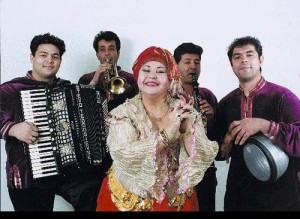
www.sinti-roma.at www.verein-roma.at
Esma Redžepova (Macedonian: Есма Реџепова) is a Romani Macedonian vocalist, songwriter, and humanitarian born in Skopje, SFR Yugoslavia (today Republic of Macedonia). During her life she has performed in more than 8000 concerts in 30 countries, with her late husband Stevo Teodosievski she has fostered forty-seven children, and she has received numerous accolades for her humanitarian work. By her own account she has created more than 500 works of art. These include 108 singles, 20 albums, and 6 movies. Read more: > HERE <
Cultural diversity is the variety of human societies or cultures in a specific region, or in the world as a whole. (The term is also sometimes used to refer to multiculturalism within an organization. This article does not currently cover that alternative meaning.) There is a general consensus among mainstream anthropologists that humans first emerged in Africa about two million years ago.Since then they have spread throughout the world, successfully adapting to widely differing conditions and to periodic cataclysmic changes in local and global climate. The many separate societies that emerged around the globe differed markedly from each other, and many of these differences persist to this day . Read More: > HERE <
Esma Redzepova travelled all over the world: New York, London, Sydney, Paris (appearing for the first time at Olympia in 1962), Mexico, India (where she was acclaimed as the Queen of Romany Songs at the first world festival of Romany music in 1976). With obvious pride she claims to have performed at more than 22,000 concerts, with a repertoire of over 800 songs. There is no way of checking such figures, but whatever their veracity they are on a par with the legend she has created. At her home in Skopje, capital of the republic of Macedonia, there is no doubt about her standing as a star in the Roma community.
The Gyspy Queen Esma Redzepova and the Nederlands Blazers Ensemble during the 1999 New Year’s Concert in the Concertgebouw, Amsterdam. Also playing, special guest François Castiello (Bratsch).
In addition to her work as a singer, Redzepova has become an ambassador for Roma culture. In the course of her travels in and around the Balkans, she has adopted 47 children who were living on the street and introduced them to the joys of music. The musicians who now accompany her at concert performances and on recordings belong to this extended family. For several years she has been actively involved in the management of Rom-Esma, a non-governmental organisation she set up to uphold the rights of Roma women and more largely the community worldwide. When asked about disparaging remarks about travellers by the French president, Nicolas Sarkozy, she cited the example set by Macedonia.
„It is the only country where the Roma are recognised,“ Redzepova says. They enjoy access to education, culture (with two privately owned Roma television channels) and civic life (as the leader of a local council or MP). She is proud to have been born in Macedonia, because in other countries „the Roma are not respected and must endure humiliation and persecution“, she says. When she performed the following evening she made a point of reasserting the cosmopolitan values and traditions of pacifism and freedom upheld by Travellers.
Sufism International & the Hope Project
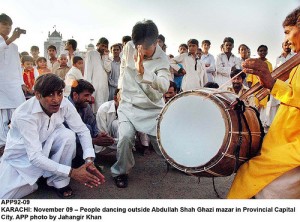
www.unesco.org/Intangible Heritage
Sufism or taṣawwuf (Arabic: تصوّف) is, according to its adherents, the inner, mystical dimension of Islam. A practitioner of this tradition is generally known as a ṣūfÄ� (صُوفِيّ). Another name for a Sufi is Dervish. Classical Sufi scholars have defined Sufism as „a science whose objective is the reparation of the heart and turning it away from all else but God.“Alternatively, in the words of the Darqawi Sufi teacher Ahmad ibn Ajiba, „a science through which one can know how to travel into the presence of the Divine, purify one’s inner self from filth, and beautify it with a variety of praiseworthy traits.“ Classical Sufis were characterised by their attachment to dhikr (a practice of repeating the names of God) and asceticism. Sufism gained adherents among a number of Muslims as a reaction against the worldliness of the early Umayyad Caliphate (661-750 CE[6]). The Sufi movement has spanned several continents and cultures over a millennium, at first expressed through Arabic, then through Persian, Turkish and a dozen other languages. „Orders“ (ṭuruq), which are either SunnÄ� or ShÄ�‘Ä� in doctrine, trace many of their original precepts from the Islamic Prophet Muhammad through his cousin ‘AlÄ�, with the notable exception of the Naqshbandi who trace their origins through the first Caliph, Abu Bakr. Other exclusive schools of Sufism describe themselves as distinctly Sufi. Read more: >here<
Naqshbandi (an-Naqshbandiyyah, Nakşibendi, Naksbendi, Naksbandi) is one of the major tasawwuf spiritual orders (tariqa) of Sufi Islam. It is considered to be a „sober“ order. The Naqshbandi order is nearly 1,500 years old, and is active today. It is the only Sufi order that claims to trace its direct spiritual lineage (silsilah) to Muhammad through Abu Bakr, the First Caliph and Muhammad’s companion. This lineage also indirectly connects to Ali Muhammad’s cousin, son-in-law and the Fourth Caliph, via Jafar as-Sadiq. In contrast, most other Sufi orders (turuq) trace their lineage through Ali. It is considered that the transmission of spiritual lineage or silsilah, is directly from one Sheikh to another, at or after the time of death or burial. It is not tied to a country, family or political appointment, but is a direct heart to heart transmission. It is also considered that the appointed Sheikh will be in some communication with past Sheikhs. At any one time, there will of course be many other Sheikhs, who will all naturally owe their spiritual allegiance (Beyat) to the current master of the silsilah. Read more: >here<
Sufism, the West, and Modernity – In the twentieth century Sufism began to spread in the West. An uneven and spotty but still useful introductory on-line article is A History of Western Sufism (fixed January, 2005) by Prof. Andrew Rawlinson of the University of Lancaster. The following articles by Kinney and Bayman illustrate some general trends and issues:
The Sufi Conundrum, written by Jay Kinney, the publisher and editor-in-chief of the magazine Gnosis, discusses a number of issues confronting Americans as they investigate the nature and practice of Sufism today.
Sufism and Modernity (link fixed, Dec. 10, 2004) is a chapter from the on-line book Science, Knowledge, and Sufism, (link fixed 20 August, 2005) by Henry Bayman (author of The Station of No Station: Open Secrets of the Sufis ), a disciple of the Turkish Shaykh Ahmet Kayhan (d. 1998). This particular chapter consists largely of a Sufi analysis of modernity, solidly based upon the writings of other scholars who have written about modernity, scholars such as Marshall Berman, Charles Taylor, and Alain Touraine. Sufism in the West falls into four general categories: http://www.uga.edu/islam/sufismwest.html
Surrounding the shrine of Inayat Khan and the other holy places in the Nizamuddin district of New Delhi is a neighborhood where many children live in poverty and isolation. The Hope Project is the outgrowth of a milk program originally begun on Pir Vilayat’s initiative here. These kids go to school there and prepared a program for this event. The Hope Project is supported primarily by donors from all the Orders of Inayat Khan’s lineage. For information contact Quan Yin (quanyinlyn@gmail.com). / Sufism – a mystical strand of Islam – originated in the Islamic cultures of Asia and Africa, but it also has a growing following in the U.S. Its growth is attributed in large part to the teachings of Bawa Muhaiyaddeen, a Sufi mystic. To learn more about the man and his teachings, Imran Siddiqui of VOA’s Urdu Service visited his mazar – or mausoleum – in the eastern U.S. state of Pennsylvania, which has become a gathering place for many followers of Bawa Muhaiyaddeen.
The Hope Project was founded in 1980 by the Sufi teacher, Pir Vilayat Inayat Khan. Moved by the extreme poverty of the people living near the mausoleum of his father Hazrat Inayat Khan, he envisioned a program, which would enable the poor to help themselves.
Located in Basti Hazrat Nizamuddin, the Hope Project currently runs a community health centre, a creche, a non-formal school, vocational training courses, a thrift and credit program, and a women’s micro-enterprise unit.
The project has 70 staff members, many of whom come from the community. It is financed largely by private donations from the international Sufi community and other donor agencies.
Guided by the spiritual ideals of Hzt. Inayat Khan, the Hope Project is driven by the spirit of service to humanity and respect for all religions. It strives to provide people, especially the poor and vulnerable, with opportunities and resources, so that they can realize their hidden potential and determine their own future.
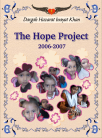
www.hopeprojectindia.org/reports.htm
- Articles o Sufism < , Articles on Pakistan & Flood Relief<
- Sufism – UNESCO Documents and Publications <
- http://aulia-e-hind.com , http://www.aulia-e-pakistan.com
- www.sufimovement.us , www.kashmirsufism.org
- www.haqq.com.au , www.sufismus.ch
- www.mevlana800.info , www.hope-project.de
- www.australiansuficentre.org , www.osmanische-herberge.de
- Meet International Year of Biodiversity 2010, friends, fans at fb <
- Meet NCCT (National Campaign For Combating Terrorism)at fb <
- Meet COP16 to the UN Framework Convention on Climate Change at fb <
- Meet Council for a Parliament of the World’s Religions (CPWR)at fb <
SOS Water Poisoning, Health Care & Wells
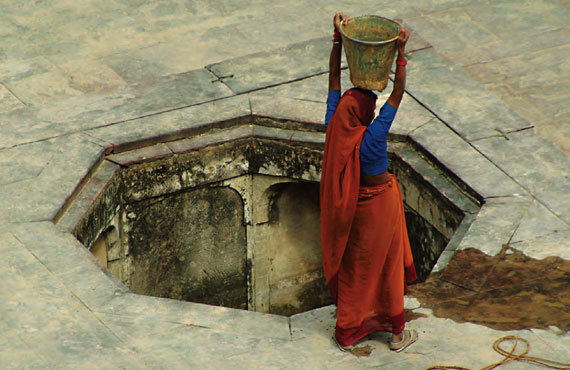
Arsenic_contamination_of_groundwater
The Bhopal disaster or Bhopal Gas Tragedy is the world’s worst industrial catastrophe. It occurred on the night of December 2-3, 1984 at the Union Carbide India Limited (UCIL) pesticide plant in Bhopal, Madhya Pradesh, India. UCIL was the Indian subsidiary of Union Carbide Corporation (UCC). Indian Government controlled banks and the Indian public held a 49.1 percent ownership share. In 1994, the Supreme Court of India allowed UCC to sell its 50.9 percent share. The Bhopal plant was sold to McLeod Russel (India) Ltd. UCC is now a subsidiary of Dow Chemical Company. A leak of methyl isocyanate (MIC) gas and other chemicals from the plant resulted in the exposure of several thousands of people. A leak of methyl isocyanate (MIC) gas and other chemicals from the plant resulted in the exposure of several thousands of people. Estimates vary on the death toll. The official immediate death toll was 2,259 and the government of Madhya Pradesh has confirmed a total of 3,787 deaths related to the gas release. Other government agencies estimate 15,000 deaths. Others estimate that 8,000 died within the first weeks and that another 8,000 have since died from gas-related diseases.
“ C L E A N U P “ : Chemicals (~390 tons) abandoned at the plant continue to leak and pollute the groundwater. Whether the chemicals pose a health hazard is disputed. Read More: > HERE <
The Sambhavna Trust is a charitable trust run by a group of eminent doctors, scientists, writers and social workers who have been involved with various aspects of the Union Carbide disaster ever since its occurrence in December 1984. The Chairperson of Sambhavna, Dr. PM Bhargava, was awarded the „Padma Bhushan“ by the President of India in 1986 and the „Legion d’Honneur“ in 1998 by the French government for his scientific and social contributions. Dr. H H Trivedi, former Professor at the Gandhi Medical College and Satinath Sarangi are the two Bhopal based trustees of Sambhavna.
Many are unaware that the disaster in Bhopal continues to this day. An estimated 120,000-150,000 survivors of the disaster are still chronically ill. Over 23,000 have died of exposure-related illnesses and more are dying still. Tens of thousands of children born after the disaster suffer from growth problems and far too many teenaged women suffer from menstrual disorders. TB is several times more prevalent in the gas-affected population and cancers are on the rise.
The Bhopal Medical Appeal was launched in 1994, when a man from Bhopal came to Britain to tell whoever would listen about the calamitous condition of the still suffering victims of the Union Carbide gas disaster. Those who met him learned that after ten years, the survivors had received no meaningful medical help. (Unless one is prepared to accept that aspirin is a cure-all for the dreadful illnesses visited on them.)
The survivors realised that they must help themselves, because nobody else would. They wanted to open their own free clinic for gas victims. They were joined in the UK by a few individuals who put the mechanics of the Appeal together. They were in turn joined in this effort by other like minded people. Our newsletter is called 777. The name arose from an attempt to capture the spirit of the Appeal. Someone suggested, ’saat, saat, saat‘, which in Hindi means ‚together, together, together‘, but with a slight twist of the tongue could also mean ’seven, seven, seven.‘ ‚We‘ means all of us, all together.
BhopalMedicalAppeal /Arsen Water Myanmar/Arsen Water Pakistan
Thirty years ago, Bangladeshi villages began pumping arsenic-laced water in a development project gone awry. Why will it take another 30 years to halt the biggest mass poisoning in history?
The story beggars belief. In the 1970s, international agencies headed by the United Nations Children’s Fund (UNICEF) began pumping millions of dollars of aid money into Bangladesh for tubewells to provide “clean” drinking water. According to the World Health Organization, the direct result has been the biggest outbreak of mass poisoning in history. Up to half the country’s tubewells, now estimated to number 10 million, are poisoned. Tens, perhaps hundreds of thousands will die.
Even now as the scale of the calamity emerges, nobody is admitting culpability. Not UNICEF, which initiated the tubewells programme and paid for the first 900,000 wells, nor the WORLD BANK, a fellow sponsor. Not the Bangladeshi government, or the foreign engineers and public health scientists who did not think to test the water for so long.
Arsenic contamination of groundwater is (not always natural!) a natural occurring high concentration of arsenic in deeper levels of groundwater, which became a high-profile problem in recent years due to the use of deep tubewells for water supply in the Ganges Delta, causing serious arsenic poisoning to large numbers of people. A 2007 study found that over 137 million people in more than 70 countries are probably affected by arsenic poisoning of drinking water.
Arsenic contamination of ground water is found in many countries throughout the world, including the USA. Approximately 20 incidents of groundwater arsenic contamination have been reported from all over the world. Of these, four major incidents were in Asia, including locations in Thailand, Taiwan, and Mainland China. South American countries like Argentina and Chile have also been affected. There are also many locations in the United States where the groundwater contains arsenic concentrations in excess of the Environmental Protection Agency standard of 10 parts per billion adopted in 2001.
Arsenic Catastrophe in Bangladesh: Project To Support the Poorest Rural Population in Bangladesh, Enhance Environmental Consciousness, Regain Traditional Wisdom. and Cultural Heritage . The people will invent more methods and survival strategies, if we really want to survive and refuse vested business interests of many western countries offering inadequate and expensive technologies. We need your help to make this extraordinary project a success. Every step of the project will be accompanied with on-line reports on this page, which will enhance your active participation.
Our goal is to help these people help themselves escape death. By the people, for the people, using simple, affordable methods….You can help by donating any amount: One arsenic free well costs less than 100 EUR – just donate 1 EUR. Solidarity for the poor- Also for Recent Cyclone Disastor: www.sos-arsenic.net
![]()
- www.unwater.org
- The immediate alternatives from http://www.sos-arsenic.net are:
- Deep tube wells in Southern Bangladesh, with special reference to saline water intrusion and improved drilling methods on a contaminated aquifer. „Arsenic free water trap“ at shallow depths. Rain water harvesting. Dug wells, only when „shallow water trap“ is not available. Low cost community based water purification units.
- New and immediate agricultural policy – „Flood Water Irrigation“.
- Regain traditional wisdom.
- http://en.wikipedia.org/wiki/Arsenic_poisoning
http://en.wikipedia.org/wiki/Arsenic_contamination_of_groundwater - http://www.unesco.org/courier/2001_01/uk/planet.htm <
- Meet Transparency International, friends, fans at fb <
- Meet the Bhopal Medical Appeal, friends, at fb <
- Meet Arsenic & Health Research in Bangladesh at fb <
Rising from Ashes – Development as Freedom
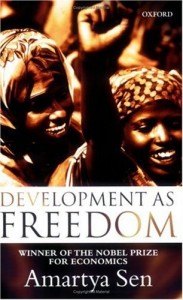
3rd International Rice Congress (IRC 2010)
Amartya Kumar Sen, CH (Bengali: , Ômorto Kumar Shen; born 3 November 1933) is an eminent Indian economist and philosopher. He is currently the Thomas W. Lamont University Professor and Professor of Economics and Philosophy at Harvard University. He is also a senior fellow at the Harvard Society of Fellows and a Fellow of Trinity College, Cambridge, where he previously served as Master from the years 1998 to 2004.He is the first Asian and the first Indian academic to head an Oxbridge college. He has been called „the Conscience and the Mother Teresa of Economics“for his work on famine, human development theory, welfare economics, the underlying mechanisms of poverty, gender inequality, and political liberalism. However, he refutes the comparison to Mother Teresa by saying that he has never tried to follow a lifestyle of dedicated self-sacrifice. In 1998, Sen won the Nobel Memorial Prize in Economic Sciences for his contributions to work on welfare economics. Amartya Sen’s books have been translated into more than thirty languages. He is a trustee of Economists for Peace and Security. In the year 2006, Time magazine listed him under „60 years of Asian Heroes“and now in 2010 as among the 100 most influential persons in the world.
Sen was born in Santiniketan, West Bengal, the university town established by the poet Rabindranath Tagore, another Indian Nobel Prize winner. His ancestral home was in Wari, Dhaka in modern-day Bangladesh. Rabindranath Tagore is said to have given Amartya Sen his name („Amartya“ meaning „immortal“). Sen hails from a distinguished family: his maternal grandfather Kshitimohan Sen, a close associate of Rabindranath Tagore, was a renowned scholar of medieval Indian literature, an authority on the philosophy of Hinduism, and also the second Vice Chancellor of Visva-Bharati University. Read More HERE
NÄ�landÄ� (Hindi/Sanskrit/Pali: नालंदा) is the name of an ancient center of higher learning in Bihar, India. The site of Nalanda is located in the Indian state of Bihar, about 55 miles south east of Patna, and was a Buddhist center of learning from 427 to 1197 CE. It has been called „one of the first great universities in recorded history.“ Read More: HERE
Sen starts out addressing the question of whether or not freedom is conducive to development. He feels that such a question is at best defectively formulated, for reasons given below. Sen ponders over how freedom is often dissociated from development, and considered a pleasant consequence thereof. However, Sen counters that freedom in itself should be the goal of development, and it is both constitutive and instrumental to development.
He makes the argument that freedom (political, economic or societal) is central to achieving development; while freedom may result from such development, it would be unwise to ignore the inverse relationship, and true development will only happen through the proliferation of such freedoms. Furthermore, if the definition of development is to move beyond GNP and include freedom, unfree societies aren’t really quite developed.
Sen also argues against the “Lee Hypothesis”, named after the first Prime Minister of Singapore, Lee Kuan Yew. The idea behind the “Lee Hypothesis” is that democracy and freedom are luxuries that only developed societies can afford, and to become developed, less-developed societies will need to push forth agendas that may be at odds with democracy and freedom. Furthermore, a more ardent view would be that “non-democratic systems are better in bringing about economic development” for such societies.
In the same vein, he also takes to task the interpretation that “Asian Values” are inherently unsuitable and unfit for democracy, where Asia is defined not by region but through culture. The argument goes that discipline and obedience are critical traits to the Asian cultural psyche and as such, democracy is at odds with such a principle. This particular notion has had the unfortunate reputation of being exploited by authoritarian governments across Asia.
Sen counters both the “Lee Hypothesis” and the “Asian Values” argument by offering the example of the biggest democracy in Asia — India. While India has made several economic mistakes through the years, the fact that it continues to be free democracy has helped its economy grow while preserving the freedoms of its citizens. Sen also counters that the “Asian Values” argument isn’t necessarily unique to Asia, and that even within Asia, there have been differing schools of thought, including those that question blind allegiance to the state. And of course, this book also touches upon Sen’s (now-famous) insight on famines and democracies.
He argues that famines are not necessarily caused by lack of declines in food production but rather due to instability in the political, economic, or societal structures that leaves sections of the population unable to fend for themselves.
Sen further proposes that countries that are “free” in the economic sense would have citizenry with a consistent income flow, and this income can be used to borrow or import basic necessities in times of need.
In Development as Freedom Amartya Sen explains how in a world of unprecedented increase in overall opulence millions of people living in the Third World are still unfree. Even if they are not technically slaves, they are denied elementary freedoms and remain imprisoned in one way or another byeconomic poverty, social deprivation, political tyranny or cultural authoritarianism. The main purpose of development is to spread freedom and its ‚thousand charms‘ to the unfree citizens. Freedom, Sen persuasively argues, is at once the ultimate goal of social and economic arrangements and the most efficient means of realizing general welfare.
Social institutions like markets, political parties, legislatures, the judiciary, and the media contribute to development by enhancingindividual freedom and are in turn sustained by social values. Values, institutions, development, and freedom are all closely interrelated, and Sen links them together in an elegant analytical framework. By asking ‚What is the relation between our collective economic wealth and our individualability to live as we would like?‘ and by incorporating individual freedom as a social commitment into his analysis Sen allows economics once again, as it did in the time of Adam Smith, to address the social basis of individual well-being and freedom. But at the end of the day, Sen concludes that true development cannot be measured through mere tangibles (e.g. GNP). Freedom remains the only true measure of development, and when there is freedom, development will follow.
„Poverty is perpetuated by our Institutions“ http://wn.com/amartya_sen_think_and_act http://www.theendofpoverty.com
Amartya Sen, Born in West Bengal, India, he has a patrician style: occasionally loquacious, often ironic, usually genial, always brilliant. Crucially, at the other, older Cambridge, Sen studied philosophy and economics. He has always concerned himself as much with moral as material problems. In his most famous book, Poverty and Famines — inspired by the Bengal famine of 1943, which he witnessed as a boy — he asked how people could starve when food was available. The answer was that the poor simply lacked the capability to buy it. On these and other issues, the argumentative Indian has persuaded.
His notion of measuring human development is now central to the work of the U.N. and the World Bank. As a result, Sen’s influence extends all the way down to what another great economist has called „the bottom billion.“ http://www.time.com/time/specials.html
Amartya Sen, the World Bank, and the Redress of Urban Poverty: A Brazilian Case Study – While there is some suggestion of a re-orientation in the World Bank’s income-cantered conceptualization of poverty to one based on Amartya Sen’s concept of ‚development as freedom‘, it is hard to uncover definitive evidence of such a re-orientation from a study of the Bank’s urban programmes in Brazil. This paper attempts an application of Sen’s capability approach to the problem of improving the urban quality of life, and contrasts it with the World Bank’s approach, with specific reference to a typical squatter upgrading project in Novos Alagados in Salvador da Bahia, Brazil. Click here
A GLOBAL EDUCATION PROGRAM – THE CASE OF NOVOS ALAGADOS, Salvador Bahia, Brazil – In development programs it is fundamental to set upmalliances finalised towards the common objective: a partnership between subjects to set synergies and large amounts of resources into motion. The role of AVSI was exactly the one of aggregating and involving local administrations, social forces, international institutions, according to their respective roles, to meet the needs confronting them, for the common good.
The program had the peculiarity to have a large wealth of resources converge on the territory, through the partnership network, thus opening up the area towards the world and the world towards the area.
India’s lost Buddhist university to rise from ashes – Indian academics have long dreamt of resurrecting Nalanda University, one of the world’s oldest seats of learning which has lain in ruins for 800 years since being razed by foreign invaders.
Now the chance of intellectual life returning to Nalanda has come one step closer after the parliament in New Delhi last month passed a bill approving plans to re-build the campus as a symbol of India’s global ambitions.
Historians believe that the university, in the eastern state of Bihar, once catered for 10,000 students and scholars from across Asia, studying subjects ranging from science and philosophy to literature and mathematics.
Founded in the third century, it gained an international reputation before being sacked by Turkic soldiers and its vast library burnt down in 1193 — when Oxford University was only just coming into existence.
Piles of red bricks and some marble carvings are all that remain at the site, 55 miles (90 kilometres) from Bihar’s state capital of Patna.
„Nalanda was one of the highest intellectual achievements in the history of the world and we are committed to revive it,“ said Amartya Sen, the renowned economist and Nobel laureate who is championing the project.
„The university had 2,000 faculty members offering a number of subjects in the Buddhist tradition, in a similar way that Oxford offered in the Christian tradition,“ he said at a promotional event in New Delhi.
The new Nalanda University has been allocated 500 acres (200 hectares) of land near its original location, but supporters who have lobbied for the cause for several years admit that major funds are needed if Nalanda is to rise from the ashes.
„Income from a number of villages, and funds from kings, supported the ancient Nalanda. Now we have to look for donations from governments, private individuals and religious groups,“ said Sen. Whatever the financial position, the need for more high-level educational institutes in India is clear. Click HERE
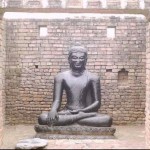
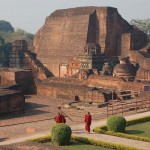
- DEVELOPMENT AS FREEDOM <
- Naropa & Nalanda University <
- Jain Tradition & Nalanda University <
- http://nobelprize.org/nobel_prizes/economics/sen-autobio.html
- http://nobelprize.org/nobel_prizes/peace/laureates/2006/yunus.html
- http://www.avsi.org/NovosAlagados.pdf
- Meet IRRI Rice Research Center, studies, friends, fans at fb <
- Meet Yunus Center, studies, friends, fans at fb <
- Meet Human Rights Watch, friends, fans at fb <
- Meet Transparency International, friends, fans at fb <
- Meet FAIR TRADE, friends, fans at fb < & www.ethicalconsumer.org
- Meet International Year of Biodiversity, friends, fans at fb <
- Meet Support UN Resolution on the Right to Water and Sanitation <
- Meet UN Millennium Development Goals, friends, fans at fb <
- Meet International Year of Biodiversity, friends, fans at fb <
- Meet COP16 to the UN Framework Convention on Climate Change at fb <
Sustainable Development, Water & Tourism
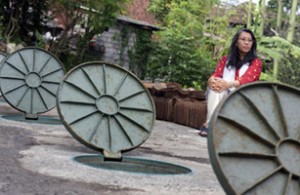
http://balifokus.asia/balifokus
“When public services fail to serve all populations equally, if people get more trust and empowerment, most of the problems can be solved closer to the source in a more sustainable way with less costs than the conventional and centralized approach.” — Yuyun Ismawati, Indonesia, Sustainable Development
Bali is an Indonesian island located in the westernmost end of the Lesser Sunda Islands, lying between Java to the west and Lombok to the east. It is one of the country’s 33 provinces with the provincial capital at Denpasar towards the south of the island. With a population recorded as 3,551,000 in 2009, the island is home to the vast majority of Indonesia’s small Hindu minority. About 93.2% of Bali’s population adheres to Balinese Hinduism, while most of the remainder follow Islam. It is also the largest tourist destination in the country and is renowned for its highly developed arts, including dance, sculpture, painting, leather, metalworking, and music. Read > HERE <
Tourism in Bali – The island of Bali, Indonesia, always has been an enchanting place for foreigners. Images of rice paddies, beautiful beaches and temples and a fascinating culture draw tourists from all around the world. It was only in the 1970s that tourism in Bali started to develop. The industry did bring many benefits to the island, such as increased employment, and its transformation from a marginal economic area of the country to the most important area in Indonesia after Jakarta. However, Bali s tourism development occurred quickly and without proper planning.
Therefore, tourism has caused some serious damage to the island’s environment. As one example, the sleepy village of Kuta became a tourist enclave, with its natural resources degraded and its infrastructure overwhelmed. This paper will discuss the origins of tourism in Bali and how it has affected the island’s environment. It also will discuss proposed alternatives to let tourism and the environment coexist in a more balanced fashion.
Description – Mass tourism in Bali began in 1969 with the construction of the new Ngurah Rai International Airport, allowing foreign flights directly into the island, rather than arrival via Jakarta. Three years later, in 1972, the Master Plan for the Development of Tourism in Bali was drawn by the government of Indonesia. The government wanted to make Bali the „showcase“ of Indonesia and to serve as the model of future tourism development for the rest of the country. The plan was financed by the United Nations Development Programme and carried out by the World Bank.
A Solution to Stop Garbage Destroying Tourism – Tourism took off on the island in the 1970s. The economic benefits are clear: the island went from being economically marginal to ranking second only to the country’s capital, Jakarta, in wealth creation. The island received more than 2.38 million tourists in 2009, up 14.5 percent compared with 2008, according to Ida Komang Wisnu, head of the provincial statistics office. But tourism produces on average five kilograms of waste a day per tourist – 10 times what the average Indonesian produces (Bali Fokus).
In the past, the traditional way of serving food in Indonesia was to wrap it in, or serve it on, a palm leaf: a biodegradable approach. But with the huge expansion in use of plastics and non-biodegradable packaging, the waste disposal problem is out of control.
In Indonesia, government garbage disposal services tend to collect between 30 and 40 percent of solid waste, most of this from high income communities. The majority poor population are left to fend for themselves when it comes to waste disposal.
A solution by Yuyun Ismawati, an environmental engineer and consultant, has since 1996 focused on helping poor communities find ways to safely dispose of waste.
Yuyun Ismawati is an Indonesian environment engineer. She has worked on design of city and rural water supply systems, and later on designing systems for safe waste management.
In 2000, she started her own NGO – Bali Fokus – and opened a waste management facility in the Bali village of Temesi. The recycling plant employs 40 people from the village, who sort garbage into recyclables, compost and residual waste. Income from the recycled waste and compost goes to helping local farmers.
Bali Fokus’ successful approach has now been replicated in six other sites on the nearby island of Java. And the government of Indonesia has promised to help create 15 more each year.
In 2009 Ismawati won the Goldman Award which honors grassroots environmental heroes from the six inhabited continental regions: Africa, Asia, Europe, Islands and Island Nations, North America, and South and Central America.
She is also working on using decentralized grassroots approaches to bringing sewage disposal and clean water to communities.
ALL IS NOT WELL – Environmentalists and some government officials say the problems could become worse unless significant investment is made and people started conserving water.
„If there’s no change in this fast-growing tourism development, it’s not impossible that Bali will suffer from a water crisis in the next 10 years,“ said Agung Wardana from Wahli, a leading Indonesian environment group.
„The current emphasis is the development of the tourism industry which results in changes in productive and open lands that reduce the ability to provide ground water. This is made worse by neglect of river system,“ he added.
Many Balinese rely on wells for water but in some areas, particularly in the tourist centre of Kuta, so much is being extracted that salt water is fouling supplies. Rubbish and sewage being dumped into rivers was also affecting water quality.
Bali has few reservoirs and many of its rivers are used to channel water to an intricate traditional network of channels to feed the island’s iconic emerald rice fields.
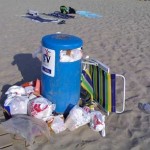
85% of Balis freshwater tapped or not clean, most freshwater urged by tourism
„Since the development of tourism industry is very fast, in the future we will have a big problem,“ said Ida Cakra Sudarsana, head of the mining and energy division in the Bali Department of Public Works.
He said Bali’s problems were not lack of ground or river water but one of development and he urged an expansion of reservoirs and tree-planting schemes in Bali’s volcanic mountains to curb deforestation and water-conservation schemes.
„We’re supposed not to face a water shortage until at least 2025,“ said Raka Dalem, a senior lecturer in environmental management and ecotourism at Bali’s Udayana University. „But in actual situation we do face a shortage situation because of bad management of water resources.
„During the wet season, lots of water flows to the sea and then in the dry season we face a bad problem. That’s the main issue, how we manage the water so that it can be used throughout the year,“ he said.
While tourist businesses and farmers diverting water from Bali’s lakes were partly to blame, there was also significant damage caused by the felling of forest trees near catchment areas for cash crop cultivation, experts said.
A lack of trees meant water and silt rushed into the lakes during downpours but there were less regular river flows during the dry season. It also meant that water was not being absorbed into the ground to fill underground basins that will provide for Bali’s water needs in the future. Water conservation is crucial.
Already at Nusa Dua, an enclave of five-star hotels and a major conference centre, the government has banned deep-well water. All big hotels in Nusa Dua used recycled waste water for watering gardens. Many luxury villas also used water-recycling systems, said Nils Wetterlind of ecovilla developer Tropical Homes.
But most villas also have large swimming pools filled from well or town water. And very few villas used solar/natural gas electricity systems now widely available or used certified plantation timber, meaning they weren’t very green.
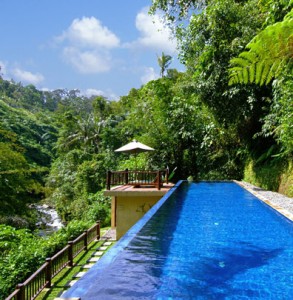
- Resources:
- Tourism in Bali – http://www1.american.edu/ted/balitour.htm
- www.nowpublic.com/solution
- A guide to establishing recycling projects based on experience in Mongolia. Website: http://tinyurl.com/yfkn2dp
- A video showing the problem of waste disposal in poor communities in Jakarta.
- Website: http://www.videosift.com/video/Garbage-ring-The-slums-of-Jakarta-Indonesia
- http://www.theaustralian.com.au/news/developers-drawn-to-tourist-magnet
- http://www.alertnet.org/thenews/newsdesk/SP117259.htm
- http://www.time.com/Heroes of the Environment 2009
- Meet Human Rights Watch, friends, fans at fb <
- The International Ecotourism Society (TIES), friends, fans at fb <
- Blue Planet Foundation, studies, friends, fans, at fb <
- Meet International Year of Biodiversity, friends, fans at fb <
- Meet Support UN Resolution on the Right to Water and Sanitation <
- Bali Institute for Global Renewal (BIGR),studies,friends, fans <
- Meet COP16 to the UN Framework Convention on Climate Change at fb <
Israeli-Palestinian „COMET-ME“ Project
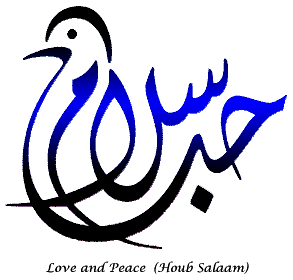
https://interfaith2010.naz.edu/
Israel (Hebrew: יÖ�שÖ�ׂרÖ�אÖ�ל, YisrÄ�’el; Arabic: إِسْرَائِيلُ, IsrÄ�’Ä�l), officially the State of Israel (Hebrew: מÖ�דÖ�ינÖ�ת יÖ�שÖ�ׂרÖ�אÖ�ל (help·info), MedÄ�nat YisrÄ�’el; Arabic: دَوْلَةُ إِسْرَائِيلَ, Dawlat IsrÄ�’Ä�l), is a parliamentary republic in the Middle East located on the eastern shore of the Mediterranean Sea. It borders Lebanon in the north, Syria in the northeast, Jordan and the West Bank in the east, the Gaza Strip and Egypt on the southwest, and contains geographically diverse features within its relatively small area. Israel is the world’s only predominantly Jewish state, with a population estimated in May 2010 to be 7,602,400 people,of whom 6,051,000 are Jews. Arab citizens of Israel form the country’s second-largest ethnic group, which includes Muslims, Christians, Druze, and Samaritans. According to the May 2010 population estimate these people number 1,551,400, including nearly 300,000 non-Citizens living in East Jerusalem. Read more: >HERE <
Palestine (Greek: Παλαιστίνη, PalaistinÄ�; Latin: Palaestina; the Hebrew name Peleshet (פלשת Pəléshseth); also פלשׂתינה, Palestina; Arabic: فلسطينFilasṭÄ�n, FalasṭÄ�n, FilisṭÄ�n) is a conventional name used, among others, to describe a geographic region between the Mediterranean Sea and the Jordan River, and various adjoining lands. As a geographic term, Palestine can refer to „ancient Palestine,“ an area that today includes Israel and the Israeli-occupied Palestinian territories, as well as part of Jordan, and some of both Lebanon and Syria.In classical or contemporary terms, it is also the common name for the area west of the Jordan River. The boundaries of two new states were laid down within the territory of the British Mandate, Palestine and Transjordan.Other terms for the same area include Canaan, Zion, the Land of Israel, and the Holy Land. Read More: > HERE <
The Bedouin (from the Arabic badawÄ� (بدوي), pl. badū) are a part of the predominantly desert-dwelling Arab ethnic group, where Arab Ethnicity is divided into three lifestyles, of the Urban, rural and Nomad people. Bedouins traditionally had strong honor codes, and traditional systems of justice dispensation in Bedouin society typically revolved around such codes. The bisha’a, or ordeal by fire, is a well-known Bedouin practice of lie detection. See also: Honor codes of the Bedouin, Bedouin systems of justice. Bedouins are well known for practicing folk music, folk dance and folk poetry. See also: Bedouin music, Ardha, Ghinnawa. Read More: > HERE <
The British Shalom-Salaam Trust (BSST) is a Jewish grant-giving initiative created in response to the humanitarian crisis in the Middle East. BSST supports projects both within Israel’s 1967 borders (the ‘Green Line’) and the Occupied Territories. We work closely with Palestinians and Israeli Jews committed to a just resolution of the conflict in Israel/Palestine based on equality and mutual respect.
During the financial year 2009-10, BSST gave financial support to 27 very varied organisations, including to the St John’s Eye Hospital in Jerusalem for emergency detached retina surgery for patients injured in the assault on Gaza; Bustan Qaraaqa, a grassroots environmental movement in the Palestinian territories which addresses the problem of water shortage, food insecurity and waste management; Jama’ah Leadership Development and Community Empowerment group; the Jenin Cultural centre; Sadaka-Reut community in Action Programme; and the Villages Group school transportation for children of the South Hebron Area.
The projects and the activists especially the women in health and development work that we support represent a roll call of hope. They remind us that, even in these devastating times, there are still many in Israel and Palestine striving to find ways to build bridges, to live peacefully and productively in a shared humanity.
JNews promotes understanding and stimulates critical debate about Israel and Palestine among British Jews and the broader public as a contribution to promoting peace with justice for all in the region.
- JNews believes that disseminating a range of viewpoints broader than that offered by most Jewish and Israeli organizations will benefit Palestinians and Israelis.
- JNews supports the human rights of both Israelis and Palestinians and believes the two are intertwined.
- JNews believes in the application of the universal principles of social justice and human rights as the path to a just and comprehensive solution to the conflict.
Small but hopeful: Israeli-Palestinian projects in the southern Hebron hills. Israeli and Palestinian volunteers create concrete alternatives for education and energy
The separation barrier and the proximity of settlements to Palestinian villages cause serious disruptions to the daily lives of Palestinians. The situation is particularly acute for schoolchildren, who have to negotiate long circuitous routes to school as well as suffering settler violence. Many schoolchildren have stopped attending school because of these problems.
The Villages Group, a group of Jewish Israeli volunteers and Palestinian partners, decided to set up a school transportation system for children attending a new elementary school, Al-Massafer, belonging to the Palestinian community of Al-Fakhiet in the southern Hebron hills on the occupied West Bank.
The aim of the volunteers was to enable schoolchildren to reach school and return home safely, while also providing employment for a driver. In January, after a fundraising campaign, the community secured the funds to purchase an improvised school ‘bus’ – only to have it promptly confiscated by Israeli army units in the area, who abandoned it in a neighboring valley where it was found two days later. The community and volunteers didn’t give up: local activist Hamed Qawasmeh appealed worldwide for funds, and a ‘new’ vehicle was put to immediate use.The Villages Group runs several other projects in the southern Hebron hills and in the area of Nablus. Their motto is ‘performing deeds of peace.’
Energy alternatives – In March, another joint grassroots project was completed in the southern Hebron hills. The Comet-ME team, a group of Israeli and Palestinian activists including a physicist, an environmentalist and a software developer, creates energy solutions for communities in the area.
After connecting Palestinian families in the village of Sussiya to electricity by installing solar and wind systems, the founding team, encouraged by their success, moved on to neighboring communities.
These semi-nomadic communities suffer from constant harassment by hardline Jewish settlers in the area, who vandalize their property, disrupt their seasonal agricultural activities, and attempt to drive them from their homes – simple cave-dwellings in the southern Hebron hills.
The team joined forces with a Palestinian volunteer from Hebron and fifteen local Palestinian electronic engineering students (including two from Sussiya) to install wind turbines and solar cells in four cave-dwelling communities – upper Sfai, lower Sfai, Mrier al-Abid and Tuba, as well as among the Bedouin families of Umm al-Kheir, adjacent to the Jewish settlement Carmel.
www.comet-me.org / INTERVIEW: www.justvision.org
Installing Solar Cells in Tuba – They were helped by residents of all the Palestinian communities in the area.
“Small but hopeful: Israeli-Palestinian projects in the southern Hebron hills![]() ”
”
A small grant-giving charity founded in 2004, BSST supports mainly community-based, informal projects that involve practical collaboration between communities in Israel and Palestine.
Other initiatives they support include Orthodox Media Watch, a project combating racism in Jewish-Orthodox media; Sindyanna, an Arab women’s fair-trade organization in the Galilee; an educational project on torture run by the Public Committee Against Torture in Israel (PCATI); and direct medical assistance to Gaza provided by Physicians for Human Rights-Israel (PHR-Israel) during and after the war of 2008-9.
The British Shalom-Salaam Trust – One of the supporters of projects in the southern Hebron hills is a British-Jewish charity called the British Shalom-Salaam Trust (BSST).
A small grant-giving charity founded in 2004, BSST supports mainly community-based, informal projects that involve practical collaboration between communities in Israel and Palestine.
Other initiatives they support include Orthodox Media Watch, a project combating racism in Jewish Orthodox media; Sindyanna, an Arab women’s fair-trade organization , in the Galilee www.sindyanna.com ; an educational project on torture run by the Public Committee Against Torture in Israel (PCATI); and direct medical assistance to Gaza provided by Physicians for Human Rights-Israel (PHR-Israel) during and after the war of 2008-9.
-
Photos by Ehud Krinis, CPT Hebron and Edoardo Soteras.
 Physicians for Human Rights-Israel (PHR-Israel) utube Channel <
Physicians for Human Rights-Israel (PHR-Israel) utube Channel <
MALC, Ruth Pfau – Flood Relief Pakistan
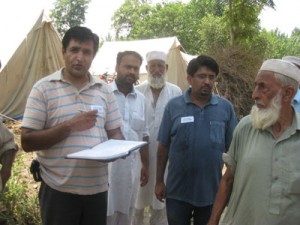
Int. Website of Mary Ward Schools
Dr. Ruth Katherina Martha Pfau (born 1929) is a Pakistani-German nun and a member of the Society of Daughters of the Heart of Mary who has devoted the last 50 years of life to fighting leprosy in Pakistan. In 1996, Pakistan was declared by the World Health Organization to have controlled leprosy, one of the first countries in Asia to achieve this goal. Read More: > HERE <
Pakistan (Urdu: پاکِستان) officially the Islamic Republic of Pakistan (Urdu: اسلامی جمہوریہ پاکِستان) (also the Federation of Pakistan), is a country in South Asia. It has a 1,046-kilometre (650 mi) coastline along the Arabian Sea and Gulf of Oman in the south, is bordered by Afghanistan and Iran in the west, and India in the east and China in the far northeast. Tajikistan also lies very close to Pakistan but is separated by the narrow Wakhan Corridor. Thus, it occupies a crossroads position between South Asia, Central Asia and the Middle East. The region forming modern Pakistan was at the heart of the ancient Indus Valley Civilisation and then later was the recipient of Vedic, Persian, Indo-Greek, Islamic, Turco-Mongol, and Sikh cultures. The area has witnessed invasions and/or settlements by the Indo-Aryans, Persians, Greeks, Arabs, Turks, Afghans, Mongols and the British.
While the Indian independence movement demanded an independent India, the Pakistan Movement (led by Quaid e Azam Muhammad Ali Jinnah of the All-India Muslim League) sought independent states for the majority Muslim populations of the eastern and western regions of British India as well.The British granted independence and also the creation of one Muslim majority state of Pakistan that comprised the provinces of Sindh, North-West Frontier Province, West Punjab, Balochistan and East Bengal. With the adoption of its constitution in 1956, Pakistan became an Islamic republic. In 1971, a civil war in East Pakistan resulted in the creation of Bangladesh. Read More: > HERE <
The German Leprosy and Tuberculosis Relief Association (DAHW), founded in 1957, is a non-profit organisation with headquarters in Würzburg, Germany. It has 62 members. The eight-person Board works on a voluntary basis. For 50 years, DAHW has been helping millions of sick and marginalised people in Africa, Asia, Central and South America. It supports more than 300 relief projects in about 40 countries. DAHW is politically and denominationally independent.
The priorities – The core activity of DAHW is to cure people affected by leprosy and tuberculosis. DAHW takes care also of people who have contracted HIV or who are suffering from AIDS. It combats forgotten diseases such as Buruli ulcer (an infectious disease, similar to leprosy, in Africa, that causes disfigurement, mainly in children), Chagas disease (transmitted by assassin bugs in South and Central America; it causes damage to the nervous system, heart and gut) and leishmaniasis , Kala Azar(carried by phlebotomine sandflies in Asia and Africa; leishmaniasis affects the internal organs, skin or mucous membranes to varying degrees of severity). In places where DAHW has a good infrastructure, it also provides disaster relief, most recently in southern India following the tsunami of 26 December 2004, and in Kashmir, Pakistan, after the earthquake of 8 October 2005.
You Tube Channel DAHW Ruth Pfau Gesten der Menschlichkeit, nicht politische Belehrungen, sind jetzt besonders gefragt“
MALC is working for Leprosy elimination, TB and Blindness control and Community Development for the last 54 years. It is a non profit, non sectarian organization registered under the Societies Act.
A well-knitted network of 157 control centres nationwide mostly in remote areas is functioning in close collaboration with provincial governments and providing services to the patients and communities free of charge. By the grace of Allah SWT and efforts of the team, Leprosy was controlled in 1996. After controlling Leprosy we are now making efforts for its elimination. MALC is also in the front to provide relief and rehabilitation to the poor and needy people affected by natural and man-made calamities and participates actively in the relief, reconstruction and rehabilitation activities in the earthquake and in various floods and draughts relief projects in the country.
The devastating floods in Pakistan – The already food insecure population where 77 million people go hungry in Pakistan while 36% of the population are afflicted by poverty. The situation in Pakistan has developed into a worse case scenario as the government has already declared it as the worst flood in the country’s history. The ravaging flood has moved towards south leaving behind approx 1,500 dead, 900 missing, and innumerable displaced and devastating damage to agriculture, houses and livestock. 250 houses in Kohistan have also been reported completely destroyed. Getting food supply is getting more and more challenging. In mountains due to broken road links, food supply is being transported on mules back and in some areas boats have come into action. Due to scarcity of potable water another emergency has developed for clean drinking water and relief efforts are also directed towards provision of water in containers.
Please donate generously to
MALC Emergency Relief Fund
Account No. 01-7423462-01
at Standard Chartered Bank
and help the poor families especially women and children. MORE…
Hindol Deb – Swar Ganga Music Foundation
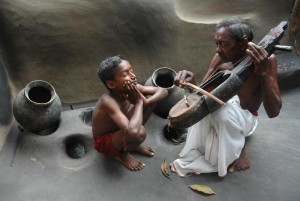
http://www.myspace.com/hindoldeb
The origins of Indian classical music can be found in the oldest of scriptures, part of the Hindu tradition, the Vedas. It has also been significantly influenced by Indian folk music, and Hindustani music has been influenced by Persian music. The Samaveda, one of the four Vedas, describes music at length. The Samaveda was created out of Rigveda so that its hymns could be sung as Samagana; this style evolved into jatis and eventually into ragas. Indian classical music has its origins as a meditation tool for attaining self realization. Bharat’s Natyashastra was the first treatise laying down fundamental principles of dance, music and drama. Read More: > HERE <
One of the upcoming sitar player and composer of his generation, Hindol started learning the Sitar at the age of five from his father, Sri. Panchanan Sardar. Later, he was groomed under the guidance of Pt. Deepak Choudhury, a senior disciple of Pt. Ravi Shankar. He graduated from the Prayag Sangeet Samiti under Allahabad University with a gold medal and is a recipient of the Sahitya Kala Parishad scholarship and the National Scholarship for Hindustani Classical Music in Sitar.
Hindol has been pursuing his dream intensely and is on his way to establish himself as a talented, upcoming young musician, giving several performances at many festivals in India and abroad. He has composed and played his music for various plays and ballets.
One striking quality about Hindol is the sense of maturity in his performance, which is unique at his age. With the deep resonating tone of his instrument, each note makes its presence felt and nothing fades away in ambiguity. His aesthetical understanding is rooted deep in spirituality. Simultaneously, he has also accomplished himself as a composer, exploring the infinite combinations in the crossover of Indian music with various other genres like Western Classical, Jazz, Blues, Electronica, Flamenco and folk music.
Recently, he was invited by the French government, with a residency scholarship, to work with other musicians and experiment with different genres like Jazz, Blues and electronic music, along with Indian classical music and performances. He was also invited by the Swedish government as the representative of India, with the musicians from fourteen different countries, to teach and play each other’s music and to perform at the ETHNO festival in Sweden. He has also toured Belgium and Greece to take part in many concert festivals.
Apart from being a performer, he is also a dedicated teacher and conducts workshops of Hindustani music, improvisation techniques and Indian Classical music appreciation in India and abroad.
Shri. Hindol Deb Plays Raag Hemant on the Day 1 of SwarGanga Music Festival 2008. The festival spanned for two days 20th and 21st December 2008. For more information visit www.swarganga.org.
SwarGanga Music Foundation, Atlanta, GA and SwarGanga Trust, Thane, India are non-profit organizations started by Adwait Joshi to promote young and upcoming artists in the field of North Indian Classical Music and spread the knowledge of North Indian Classical Music to people all over the world. SwarGanga currently has over 2 million hits from 147 different countries every year. Thanks to you all for making this site so popular.here.events page or to see any classical music events upcoming in your area please visit the event calendar.
To learn about different concepts of classical music such as sur, patti, taal, raags, please go through the series of articles starting . For a list of events organized by SwarGanga please visit www.swarganga.org . Your feedback helps us improve the website. So please respond by sending us an email .
The Energy [R]evolution demonstrates how the world can get from where we are now, to where we need to be in terms of phasing out fossil fuels, cutting CO2 while ensuring energy security. This includes illustrating how the world’s carbon emissions from the energy and transport sectors alone can peak by 2015 and be cut by over 80 percent by 2050. This phase-out of fossil fuels offers substantial other benefits such as independence from world market fossil fuel prices as well as the creation of millions of new green jobs. http://www.greenpeace.org/energyrevolution
The Best Friend -Worldpeacefestival 2010
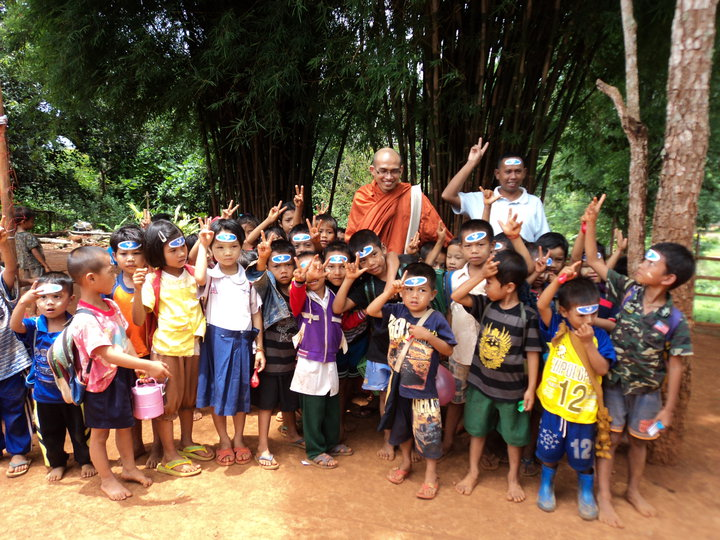
Buddhism in Myanmar (also known as Burma) is predominantly of the Theravada tradition, practised by 89% of the country’s populationIt is the most religious Buddhist country in terms of proportion of monks in the population and proportion of income spent on religion. Adherents are most likely found among the dominant ethnic Bamar (or Burmans), Shan, Rakhine (Arakanese), Mon, Karen, and Chinese who are well integrated into Burmese society. Monks, collectively known as the Sangha, are venerated members of Burmese society. Amongst certain ethnic Bamar communities, Theravada Buddhism is practiced in conjunction with nat worship, although this practice is dying out. Read More: > HERE <
Burma, officially the Union of Myanmar, is the largest country by geographical area in Indochina (mainland Southeast Asia). The country is bordered by People’s Republic of China on the north-east, Laos on the east, Thailand on the south-east, Bangladesh on the west, India on the north-west and the Bay of Bengal to the south-west with the Andaman Sea defining its southern periphery. One-third of Burma’s total perimeter, 1,930 kilometers (1,199 mi), forms an uninterrupted coastline. The country’s culture, heavily influenced by neighbors, is based on Theravada Buddhism intertwined with local elements. Burma’s diverse population has played a major role in defining its politics, history and demographics in modern times, and the country continues to struggle to mend its ethnic tensions. The military has dominated government since General Ne Win led a coup in 1962 that toppled the civilian government of U Nu. Burma remains under the tight control of the military-led State Peace and Development Council. Read More: > HERE <
The Best Friend was founded in 1999 as The Best Friend Group of Literature, by two concerned monks with the purpose of encouraging people to become more educated, aware and active in the struggle for peace and freedom in Burma. The main belief is that education can open up people’s ears and eyes and is THE way to eradicate poverty.
At one point, The Best Friend operated fifteen libraries inside Burma. The libraries provided both monks and laypersons access to uncensored information and literature. Apart from that, they were meeting places where people could discuss freely. The Best Friend also teaches languages, such as English, French, Japanese and Burmese.
The Burmese military regime has been closely monitoring and controlling the activities of politically active people, especially since the 2007 Saffron Revolution. Many of the members and volunteers of The Best Friend were forced to leave Burma to avoid persecution. Several people, also monks, were arrested and are currently imprisoned. Simply for the crime of providing information and discussing about politics and freedom.
6. – 9. August 2010
Friedensfestival 2010 Berlin
The Best Friend will take part in the Peace Festival 2010 in Berlin.
Where: Alexanderplatz, Berlin Germany
Today, only three of the fifteen libraries are still in operation. King Zero and Ashin Sopaka, the founders of The Best Friend, moved to the Thai border town Mae Sot and opened the first Best Friend Library in Thailand in 2008.
Apart from Thailand, The Best Friend has spread to many other countries in the world. It is now legally run by Kölner Buddhismus Center e.V. in Germany and is active raising awareness about the situation in Burma and giving information to people who wish to support the organization. From its new base in Thailand, The Best Friend is developing projects supporting the many Burmese refugees in the area. In 2010, the Mobile Health Care Program was launched and the Relocation Project – to help illegal refugee families , move away from the Mae Sot rubbish dump – was set up. The Best Friend also offers many classes, such as English language classes, computer and sewing courses, Dhamma teachings and children’s classes. All teachers work voluntarily and all classes are free of charge.
Acacia Senegal – Sudan’s Miracle Commodity
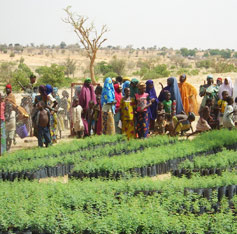
UNHCR – The UN Refugee Agency
http://notonourwatchproject.org/
http://www.fao.org/acacia senegal
Darfur (Arabic: دار فور dÄ�r fūr, lit. „realm of the Fur„) is a region in Sudan. An independent sultanate for several hundred years, it was incorporated into Sudan by Anglo-Egyptian forces. The region is divided into three federal states: West Darfur, South Darfur, and North Darfur which are coordinated by a Transitional Darfur Regional Authority. Because of the War in Darfur waged by the Sudanese government against the non-Arab indigenous population, the region has been in state of humanitarian emergency since 2003. Read more: > HERE <
CASH CROP – The term is used to differentiate from subsistence crops, which are those fed to the producer’s own livestock or grown as food for the producer’s family. In earlier times cash crops were usually only a small (but vital) part of a farm’s total yield, while today, especially in the developed countries, almost all crops are mainly grown for cash. In non-developed nations, cash crops are usually crops which attract demand in more developed nations, and hence have some export value. In many tropical and subtropical areas, jute, coffee, cocoa, sugar cane, bananas, oranges and cotton are common cash crops. In cooler areas, grain crops, oil-yielding crops and some vegetables and herbs are predominate; an example of this is the United States, where cannabis, corn, wheat, soybean are the predominant cash crops. Read more: > HERE <
Not since baking soda has there been a natural commodity that has so many different uses. In the days of the Egyptian Pharaohs, gum arabic was essential to mummification, and since Biblical times, it has been used to maintain the integrity of paints.It can also soothe a worried belly, diarrhea, and constipation, and it’s a key ingredient in soft drinks.
Gum arabic is sap from the branches of Acacia Senegal trees. It’s a natural emulsifier, which means that it can keep together substances which normally would not mix well. Pharmaceutical companies use it to keep medicines from separating into their different ingredients, and a dab of gum arabic makes newspaper ink more cohesive and permanent.
Sudan’s Miracle Commodity – The Acacia Senegal tree grows all over Africa and even on the Indian subcontinent. Most of the world’s gum arabic, however, comes from Sudan, where a thick belt of Acacia Senegal trees stretches from one end of Sudan to the other. Hassan Osman Abdel Nour is the general manager of Sudan’s largest exporter of gum arabic, the Gum Arabic Company.
„The botanist who identified Acacia Senegal first saw it in Senegal, but it turned out to be Acacia Senegal is more common in Sudan than anywhere in the belt. . . It’s an endowment from God. We did nothing about it,“ Nour says.
But extracting gum arabic from thorn-covered Acacia Senegal trees is not easy. When the amber-colored gum begins bubbling up, farm workers handpick chunks from the trees and sometimes get scratched in the process.
Still, Sudan reportedly exports tens of thousands of tons of raw gum arabic ( 60 – 70 % of the World Market) each year, feeding the high global demand. The raw sap is sent to Europe for processing and afterward is disseminated to customers worldwide.
An Industry in Decline – These days, however, business is down. Sudan’s output has dropped to nearly half of what the nation produced in its heyday. As the once abundant belt of Acacia Senegal trees across Sudan shrinks, climate change appears to be one of the culprits. Farmer Adil Basheer remembers better harvests. „In the 1990s—’e’re talking about hectares—one hectare was equivalent to seven and eight bags every two weeks. But nowadays, a hectare cannot bring a half bag or two and a half b“gs.“
The humanitarian crisis in Darfur, where more than 200,000 people have died and more than two million have been displaced, is also having a negative impact on the global gum arabic industry.
The Bush administration calls the conflict „government-sponsored genocide,“ and around the world, the Darfur crisis appears to have sullied Sudan’s reputation to that point that many companies do not want to admit that they buy a Sudanese commodity.
Coca-Cola, which uses gum arabic to keep the sugar from precipitating to the bottom of its sodas, won’t say where it gets the emulsifier. However, company representatives insist they do not buy directly from Sudan. Gum Arabic Company board president Mansour Khalid says otherwise. „They buy processed gum and the processed gum comes from Europe, and Europe buys from Sudan. And you know, the whole thing is silly.“ Staying Afloat – Some Sudanese businessmen believe that widening gum arabic’s appeal internationally is the way forward. Isam Siddiq runs the privately-owned Dar Savannah Gum Arabic processing company. He says manufacturers around the world are trying to create manmade emulsifiers as powerful as gum arabic. Siddiq wants to maintain Sudan’s competitive edge by altering the high-fiber, nonfat emulsifier’s identity from an additive to a food, and he’s ready with his sales pitch:
„America is aware of good health and good food. The American people. And they want it—fiber…The people of the world must really complement each other. We have here fiber, and they have their wheat in America. So Sudan and American could be a good partnership for the benefit of the two nation“. > Related NPR Stories <

http://en.wikipedia.org/wiki/George_clooney Not On Our Watch: Official site for charity founded by George Clooney, Brad Pitt, Matt Damon, Don Cheadle, Jerry Weintraub, David Pressman
ECONOMY – In the last ten years, the Sudanese economy has undergone a drastic change. Instead of been an agriculture-based economy it has turned into an OIL DEPENDEND ECONOMY which in turn has marginalized agriculture. At a time when the world is suffering a food crisis, which is especially afflicting Africa, food production should offer the main productive future for the Sudanese economy.
During the last year, oil revenues represented more than 65% of the Government of National Unity income and more the 90% of the revenue for the Government of South Sudan. In the last four months, oil prices have dropped by around 70%. This is a huge blow. Meanwhile, others sectors of the economy have been weakened by a combination of poor policies followed by the regime in the in the 1990s, and the failure to adapt the non-oil sectors to the impact of the growth in petroleum production. Most of the agricultural sector has been neglected and the economy is now driven by the trading sector and the informal sector, which do not contribute in a major way to creating jobs or generating income in the shape of direct or indirect taxes.
The Sudanese people are still waiting for the peace dividends in shape of economic development which will help in alleviating poverty and raising the standard of living to the majority. At the time when market economy has been tested to the limit in western countries and governments are now nationalizing banks and taking control of key economic sectors, the opposite is happening in Sudan. Instead we have a market dominated by a number of monopolies in most economic sectors, controlled by private individuals who are well-connected to the government. It is not the state that regulates the country’s leading businessmen but a cosy partnership between the two. Read More: > HERE <
The issues of the Darfur war are economical. One of them is due to rice a produce. Farmers fear the construction of dams which are made possible by the strength of the River Nile Waters.
There are places in the world that you can hardly forget like Uganda. This last country is in East Africa and has no opening on the Ocean. So, this makes it a landlocked country that needs to negociate with other countries like Kenya, Tanzania, Somalia and Eritrea to import goods by boat and there is the river Nile on which boats can sail from Cairo. Uganda is a very known country these days because of the conflit in Sudan.
This conflit is known as the Darfur war. Sudan is in the south of Egypte and that is where most of the rice plantation are. Probably thank to the river Nile rice is available in large quantities and it constitutes the major dish of the inhabitants in West Africa. The problem with rice is that it needs to be eaten reasonable other wise you gain weight which is difficult to loose especially if you don’t do a lot of activities.
Rice is a major issue. That is all the question of construction of dams which have said to be destructive for plantation. Rice is sometimes transformed into an alchoolic beverage called sake and it is a produce from Japan. So, one may think that it is important to regulate to make sure that nobody get drunk and is treated in case of fetal alchool syndrom. Actually, the population growth in Japan slowed down in the nineties. Rice grows in water and in the mountains. The well known varieties of rice are from the United States of America and France. Rice is grown in the South of the United States of America in the states of North Carolina and South Carolina. France grows rice on its south west border with Spain a place called Camargue where horses run freely.
Thus, the war in the Darfur is an economical and social problem. Rice is a cereal and can accompany many meals.
If the war continues in the Darfur there will be a food security issue. There is a need to control the cereal markets because they can often be stocked for a long time without preservatives and then some other ingredients can be neglected. This is a tragedy that happened everywhere in the world where populations thought that cereals when in large amount are able to cover all the food intake. It is good to know that there is some for eating and that all is not wasted in alchoolic beverages that can put society in danger because of risk of accidents for example and of wars. Read more in > International Business and Trade <
www.un.org/esa/socdev/unpfii/ The UN Permanent Forum on Indigenous Issues is an advisory body to the Economic and Social Council, with a mandate to discuss indigenous issues related to economic and social development, culture, the environment, education, health and human rights.
www.ethicalconsumer.org – Ethical consumption stresses the role of the consumer in preventing the exploitation of women and children in sweatshop factories overseas and in the U.S. It also considers the environmental costs of production. These costs include the depletion of natural resources, as well as human costs. For example, when a corporation like Unilever, producer of Dove and Lever soaps, Vaseline Intensive Care lotion, Finesse shanpoo, Surf detergent, and Mentadent toothpaste, employs women in the jungle areas of Bihar, India to collect seeds from the sal tree for use in lipstick, the women are deprived of control over what was formerly a resource for their own use.
Consumption in North America today will eventually destroy the environment and is in general hazardous to human health. According to the 1998 United Nations Development Report, 20% of the world’s population consumes 86% of the world’s resources, while the poorest 20% consume only 1.3%. „Not everyone has been invited to the party,“ said U.N. administrator James Gustave. „Expectations have gone global but affluence has not.“
Obviously, consuming less on a personal level in the United States does not directly ensure that people in other parts of the world will immediately be able to meet their basic needs. Changing social patterns of consumption, however, will eventually make a difference. Once individuals begin to understand how their purchases are connected within a global framework, they can demand new, sustainable methods of production. Living with fewer „things“ and assuring that all resources, including labor, are used wisely and fairly will help create a more equitable and ecological world.
By consuming consciously and ethically we can realistically create change. Being aware of current issues in labor exploitation, environmental conservation, and human rights is the best way to spend ethically. Before buying anything ask: Who makes it? Who needs it? and Who profits from it? > Here are some links to informational sites <
- www.radioafrika.net
- www.compassionineconomics.org
- CLIMATE REFUGEE´s http://en.wikipedia.org/wiki/Environmental_migrant
- GUM ACACIA MARKET REPORT: www.agrigum.com
- NY Times Mail Archive: A Tree that supports Sudan´s War by business leaders <
- GOMME SIRUP („junk sweets“) www.amountainofcrushedice.com <
- www.newcrops.uq.edu.au/listing/species_pages_A/Acacia_senegal.htm <
- UN www.fao.org/acacia senegal
- Meet Mind & Life, Compassion in Economics, studies, friends, at fb <
- Meet Human Rights Watch, friends, fans at fb <
- Meet Natural News (independent health news) studies, friends at fb <
- Meet Survival International, friends, fans at fb <
- Meet NO MORE OIL RIGS we want ALTERNATIVE ENERGY SOURCES NOW at fb <
- Meet FAIR TRADE, friends, fans at fb < & www.ethicalconsumer.org
- Meet Peace, Paix, 和平, Salam, Shalom, Pace, Mir, Friede, Paz, Shanti, Heiwa <
Nako Research and Preservation Project

http://athene.geo.univie.ac.at/project/nako
Kinnaur is one of twelve administrative districts of Himachal Pradesh, India. The district is itself divided into three administrative areas – Pooh, Kalpa, and Nichar – and has five Tehsils or counties. The administrative headquarter for Kinnaur district is at Reckong Peo. Due to the network of motorable roads all the essential facilities are available. According to ancient Hindu texts Kinners are halfway between humans and gods. From here Sangla valley, and district headquarters Recong Peo, Kalpa, Kinnaur Kailash, considered to be the abode of Lord Shiva, can be viewed. Read More: > HERE <
While the 10th and 13th centuries, the Western Himalayan region developed a refined and complex artistic culture under Western Tibetan Buddhist patronage. Some of this tradition’s most striking examples are found in the seven temples of Nako village, Upper Kinnaur, in the province of Himachal Pradesh, India. These temples are not only witness to the long history of this region, but also lie at the heart of the communitity’s religious life, in which even today a Tibetan form of Buddhism flourishes.
These temples are now endangered due to the structural fragility of their architecture, and by the infiltration of rain and melt water. For these reasons amongst others, a major preservation program was necessary, which primarily involved large scale stabilization work, as well as cleaning and conservation of the unique wall- and ceiling paintings. Due to the large scope of the project, for the time being this work has been accomplished exclusively for the Lhakhang Gongma (Upper Temple), while work has now also begun on the Lotsawa Lhakhang (Translator’s Temple).
Some of the major objectives of the NRPP have been (a) providing technical expertise and modern technology to the Nako community, (b) examining and analysing indigenous building techniques and traditional artistic handicrafts, which have contributed to the continued existence of these exquisite monuments, and (c) merging these activities with the ongoing preservation work, while taking into account local economic and technological resources. Therefore, the NRPP is to be considered a model for the future conservation and preservation of this region’s rich cultural heritage. The villagers of Nako have greatly supported and contributed to the efforts and aims of the NRPP, and the ongoing process of consultation between the NRPP, the Buddhist Association and the Nako Village Council remains central to the preservation work.
In order to establish the proper methods and priorities of the preservation process, information needs to be gathered and brought together from technical, social, economical, as well as from historical sources and, in the case of Nako, this information is neither readily available nor easily accessible. Therefore, the research conducted by the NRPP team in Vienna over the last 15 years includes scholars of art history, Tibetan language, religious history, Buddhist philosophy and cultural anthropology, in addition to architects and painting experts. Each of these disciplines provides a distinct methodology for understanding the fragmentary evidence, and their findings serve as the outset for an in-depth study and research of this region’s cultural heritage and it’s preservation.
-
UNESCO WORLD HERITAGE http://whc.unesco.org
KOA National Camps East & West Coast
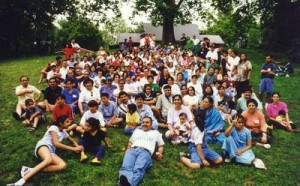
Jammu and Kashmir (Dogri: जम्मू और कश्मीर; Urdu: جموں اور کشمیر) is the northernmost state of India. It is situated mostly in the Himalayan mountains. Jammu and Kashmir shares a border with the states of Himachal Pradesh and Punjab to the south and internationally with the People’s Republic of China to the north and east and the Pakistani administered territories of Azad Kashmir and Gilgit-Baltistan, to the west and northwest respectively. Formerly a part of the erstwhile princely state of Kashmir and Jammu, this territory is disputed among China, India and Pakistan. Jammu and Kashmir is referred to in Pakistan as Indian-occupied Kashmir. Jammu and Kashmir consists of three regions: Jammu, the Kashmir valley and Ladakh. Srinagar is the summer capital, and Jammu is the winter capital. While the Kashmir valley, often known as Paradise on Earth, is famous for its beautiful mountainous landscape, Jammu’s numerous shrines attract tens of thousands of Hindu and Muslim pilgrims every year. Ladakh, also known as „Little Tibet“, is renowned for its remote mountain beauty and Buddhist culture. Read More: > HERE <
Kashmiri Pandit (Hindi: कश्मीरी पण्डित) refers to a person who belongs to a sect of Hindu Pandits who originate from the Kashmir region in the Indian subcontinent. Many honest and credible experts are of the opinion that the original home of the Aryan race is the Kashmir Valley and its vicinity. Also the fact that all Hindus of Kashmir are Brahmin Pandits retaining their rich traditions by large since several millennia point to the tradition that in ancient times all Aryan Indian Hindus were of a single Brahmin caste but later split into occupation based several castes.Read More: > HERE <
The KOA organization has its origins in the early meetings of History several Kashmiri Pandit families in the Washington D.C. and Maryland areas. These families soon came to realize the importance of building a community structure which could include other families too in a bond for mutual preservation and growth. As more families and members joined the founding group, the organization evolved to become a national outfit with regional chapters, documented bye-laws, systems and procedures as well as a non-profit status to better seek donations and pursue community actions.
This is the beginning of the process to document and detail the history and origins of KOA. At the present time, this document is a simple chronological representation from materials available in various KOA publications. The eventual document will trace the past 30 years and list important milestones that have brought the organization to the present point. > HERE <
KOA Annual National Camps – KOA organizes two national camps every year, one each in east-coast area and west-coast area. Camps like these serve the members an avenue to mingle, catch up and reminisce with friends, the most cardinal objective is to create a vibrant opportunity and a very conducive environment for our youth (our future pillars) to make new friends and hopefully progress to potential relationships that are everlasting. What better way to preserve our culture, keep our community involved and most significantly contribute towards the survival of our progeny within our cultural milieu? This in any account is huge benefit to the members. Arranging and organizing the camps like these are only possible if the organization has strength and infrastructure and KOA gets its strength from its members. Click on the following links for more details > HERE <
- Articles on Kashmir <
- Eintreten in das göttliche Bewusstsein <
- Meet Kashmiri Overseas Association, friends, fans at fb <
- Meet Roots in Kashmir, friends, fans at fb <
- Meet Coast To Coast AM w/ George Noory, friends, fans at fb <
- Meet The International Ecotourism Society (TIES) at fb <
Muhammad Yunus: Building Social Business
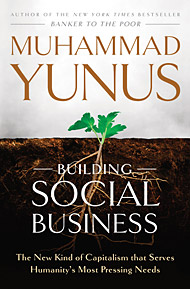
www.businessweek.com/june 2010
Muhammad Yunus (Bangla: মুহাম্মদ ইউনুস, pronounced Muhammôd Iunus) (born 28 June 1940) is a Bangladeshi banker, economist and Nobel Peace Prize recipient. He previously was a professor of economics where he developed the concepts of microcredit and microfinance. These loans are given to entrepreneurs too poor to qualify for traditional bank loans. Yunus is also the founder of Grameen Bank. In 2006, Yunus and the bank were jointly awarded the Nobel Peace Prize, „for their efforts to create economic and social development from below.“ Yunus himself has received several other national and international honors. He is the author of Banker to the Poor and a founding board member of Grameen America and Grameen Foundation. Read More: > HERE <
This third book by Professor Yunus, following Banker to the Poor and Creating a World Without Poverty, is dedicated solely towards the concept of social business, its implementation, and its maintenance. Social business is an innovative business model which promotes the idea of doing business in order to address a social problem, and not to maximize profit. As the title suggests, this complement to traditional capitalism truly can serve humanity’s most pressing needs, especially poverty. Each and every social business creates employment, good working conditions, and of course, addresses a specific social ill such as lack of education, healthcare, and good nutrition.
In simple terms, a social business is a non-loss, non-dividend company dedicated entirely to achieve a social goal. In social business, the investor gets his investment money back over time, but never receives dividend beyond that amount. The Grameen Bank is a prime example of social business, with the Grameen borrowers themselves being its shareholders!
Building Social Business consists of case studies, anecdotes, and solid advice from Professor Yunus himself. This “Social Business Manual” is a must read for anyone who wants to use his or her creativity to make a positive impact in their neighborhood, town, country, and world.
The Nobel Peace Prize-winner shows how the social business model can harness the entrepreneurial spirit to address poverty, hunger, and disease
Muhammad Yunus, the practical visionary who pioneered microcredit and, with his Grameen Bank, won the 2006 Nobel Peace Prize, has developed a visionary new dimension for capitalism which he calls „social business.“ By harnessing the energy of profit-making to the objective of fulfilling human needs, social business creates self-supporting, viable commercial enterprises that generate economic growth even as they produce goods and services that make the world a better place.
Company Overview – Grameen Bank provides credit to rural poor in Bangladesh. It offers small loans for women. The company also provides training programs to individuals in the forms of Grameen basics course, exposure programs, international dialogue programs, research, internships, workshops, and media. It offers its services to villages of Bangladesh. Grameen Bank was founded in 1976 and is based in Dhaka, Bangladesh.